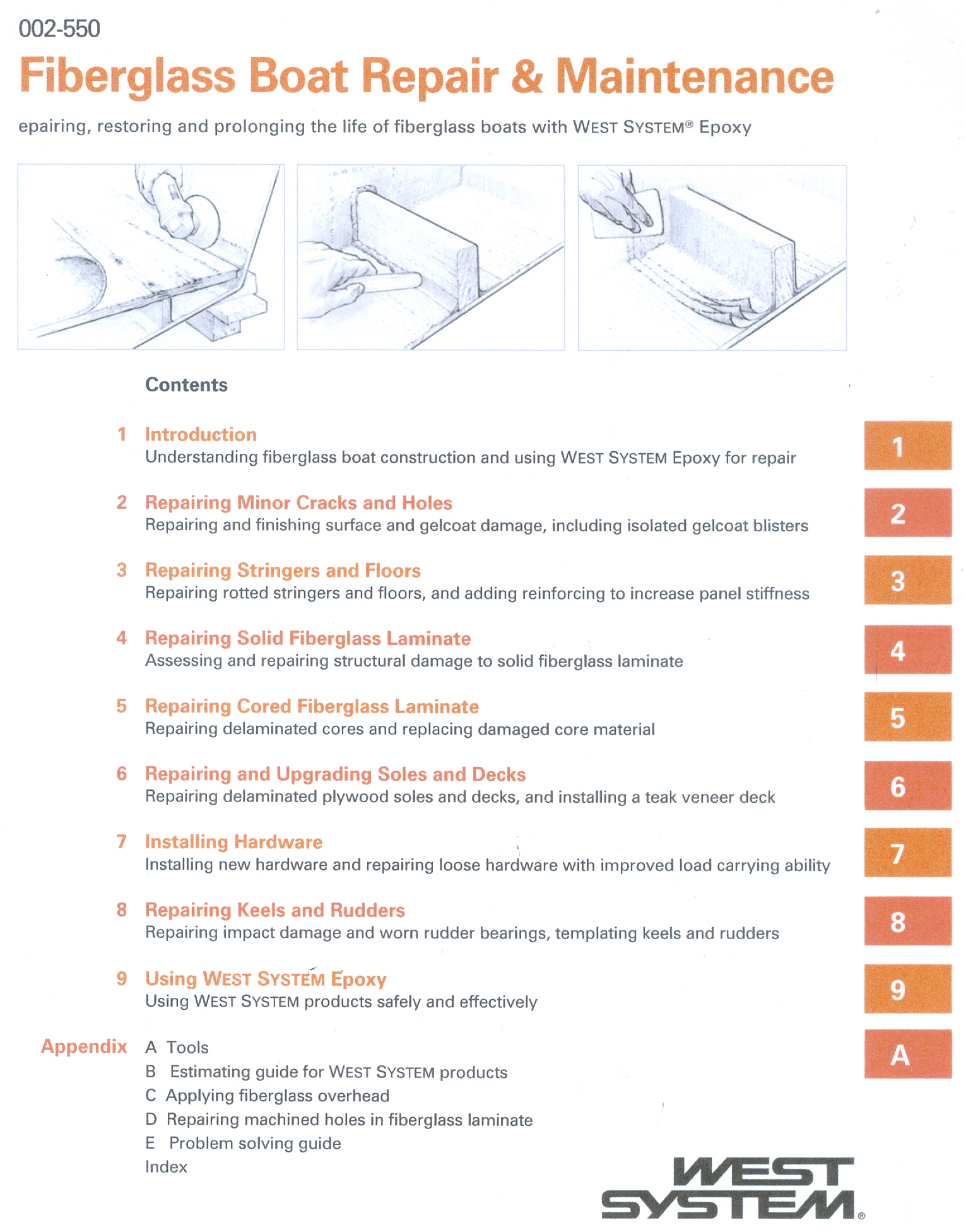
A basic message of this book, which needs emphasis, is that regardless of the original resin used it is epoxy that is the proper resin for repair. Polyester is a laminating resin. In other words it works reasonably well for "casting" parts wet on wet of resin and glass. It isn't an adhesive. It won't stick new work to old very well. Epoxy works well as a laminating resin but is also a really good adhesive. Properly formulated it is much more resistant to water than polyester. Remember that epoxy doesn't have volatile materials in it that escape during and after cure. It is essentially 100% solids. In any case it has better structural and fatigue properties than polyester. I would not even use polyester in a new boat built for myself and I always try to talk people having me design fiberglass boats into using epoxy resin systems.
While cores are mentioned and repair described, important engineering limitations of light cores are not described. If your problems with a cored hull are more than local ones due to damage, this book cannot be expected to adequately address the problem as it is probably one of poor engineering and manufacture rather than damage. Consult surveyors and naval architects on whether a vessel with general core problems can be economically repaired or rebuilt.
Several techniques are shown for attempting the re-bonding of skins to cores without removing the outer skin. Your reviewer is pretty skeptical of the effectiveness of this. It is very tempting, as it seems such an extreme step to remove the outer skin and re-glass. Nevertheless, it may well be the only option in a vessel in which structural integrity is important.
While they discuss adding teak overlays to decks, which can really enhance a boats appearance and air of quality, they don't describe how to simulate curved planks which follow the curve of the deck edge. If the decks will look best with curved planks you need to cut square sections of stock, in which both the width dimension and the depth dimension are the same as the final width that you want each veneer to be. Then turn this so that the long straight grain will be "up" and steam bend the plank to the curve you will want. After the planks have set to the curve, you can cut your 1/8" veneers by ripping them into layers using a jig to hold them and the bandsaw.
Your reviewer highly recommends this book to everyone who wishes to repair fiberglass boats. (tm) $7.50